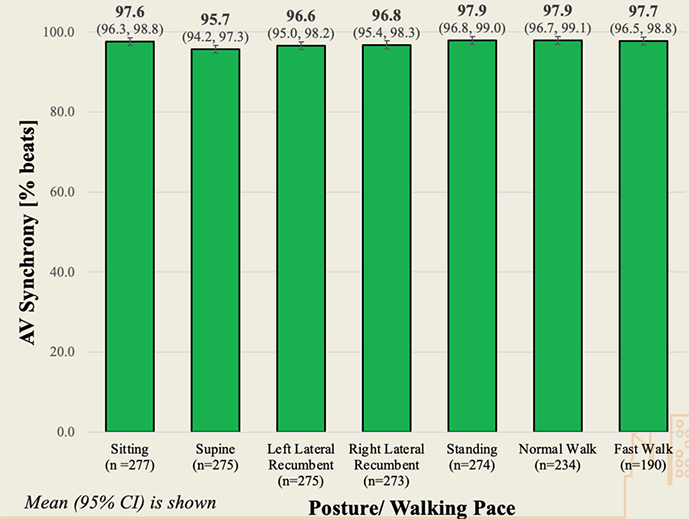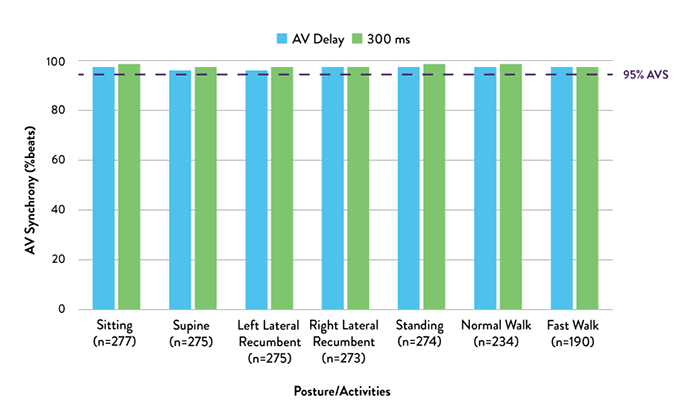
During HRS 2024, Professor Reinoud Knops, MD, PhD, shared a compelling presentation that illustrated the need for a stricter definition of AV synchrony now that true dual chamber leadless pacing is possible.1 Previously, the ability to maintain a 300 ms interval between a paced or sensed atrial and ventricular event has been considered the essential AV synchrony performance requirement in leadless pacing. But, in patient populations with certain conditions or when experiencing higher heart rates, using 300 ms as a definition for AV synchrony can be too lenient.
Professor Knops reviewed several examples that illustrate why AV synchrony calculations need to be stricter. For example, a Medtronic study illustrating VDD pacing in Micra AV‡ uses this lenient definition of a ventricular marker followed by a P-wave within 300 ms.2 However, a wide range of QRS complexes — including those with normal, longer, or shorter PQ times — can fall within that definition of AV synchrony.
Furthermore, Professor Knops highlighted a case study where a patient who was using VDD leadless pacing to treat his intermittent third-degree AV block started exercising and almost immediately developed pacemaker syndrome.
Having showcased the success in safety and efficacy for the AVEIR™ DR Dual Chamber Leadless Pacemaker (LP) System last year at Heart Rhythm 2023, Professor Knops engaged Abbott to use a new, stricter definition for AV synchrony to meet the important demand for more rigorous and customizable AV delay thresholds.3
To recap the lenient definition and results, out of 300 attempted implants in the AVEIR DR IDE study primary cohort, there were 278 evaluable patients who received the AVEIR DR LP System, that could be programmed to a dual pacing mode to utilize the implant-to-implant (i2i™) communication modality and had AV synchrony data available at their three-month visit. Subjects were administered an in-clinic AV synchrony assessment to first determine if communication between the ventricular and atrial leadless devices could meet the 300 ms AV synchrony definition during activities commonly experienced in daily living. As seen below, the AVEIR DR LP System sustained high AV synchrony based on the 300 ms PR interval threshold across a variety of postures.
AV Synchrony (AV Delay) by Posture/Activity during 3-month visit
All evaluable subject N=278

To provide more meaningful analysis, the study evaluated how well AV synchrony was maintained when the programmed paced AV delay + 50 ms of a paced or sensed atrial beat was used. The results below show that there was no difference between the strict and lenient AV delays, with both achieving more than 95% mean AV synchrony.
AV Synchrony (Programmed paced AV Delay + 50ms vs. 300ms) by Posture/Activity
All evaluable subject N=278

Today, almost 80% of all pacing in patients requires a dual chamber pacemaker. Now that the AVEIR DR LP System is redefining AV synchrony, it is possible to offer fully functional DDD(R) pacing for your patients.
Find out more details by watching Professor Knops’ presentation for yourself here.
Take a closer look at the full results of last year’s three-month study published in the New England Journal of Medicine here.
Learn more about the innovation that is the AVEIR DR LP System by visiting our dual chamber webpage.


MAT-2407565 v1.0
Stay Connected